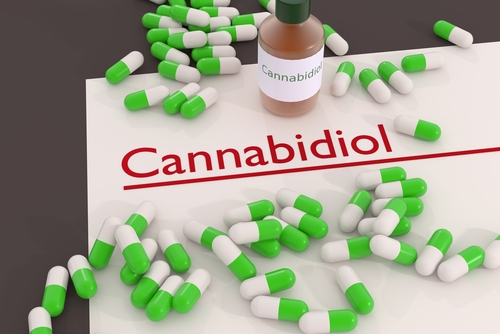Cannabidiol Oil Safely Lessens Seizures in Treatment-resistant Children, Early Trial Data Show
Written by |

Severe epilepsy in children with Dravet and Lennox-Gastaut syndrome can be safely treated with a medicinal cannabis oil that includes, at low dose, the intoxicating compound in marijuana known as THC, preliminary results of a Phase 1 clinical study suggest.
“What makes these results really exciting is it opens up as a treatment option for kids who have failed to respond to traditional medications,” said Richard Huntsman, MD, pediatric neurologist and lead author of the study, said in a news release.
Preliminary trial results were reported in the study “Dosage Related Efficacy and Tolerability of Cannabidiol in Children With Treatment-Resistant Epileptic Encephalopathy: Preliminary Results of the CARE-E Study,” published in the journal Frontiers in Neurology.
Increasing evidence suggests that non-psychotropic cannabis-derived compounds, such as pharmaceutical grade cannabidiol (CBD), can help to manage seizures in children with treatment-resistant epilepsy. But little guidance exists for doctors on the proper concentration and dosing of CBD and other cannabinoids, as well as on their pharmacological characteristics.
“The resultant inability to provide evidence-based dosing and therapeutic monitoring of cannabis-based products in children … leads to a reluctance by many physicians to authorize CBD-enriched cannabis herbal extract to these patients,” the researchers wrote.
A team led by researchers at University of Saskatchewan, Canada, are conducting an open-label Phase 1 clinical study (NCT03024827) called CARE-E. Scientists are exploring the safety and impact of increasing doses of CBD-enriched cannabis herbal extract (CHE) used as add-on therapy in up 28 children (ages 1 to 10) with epileptic encephalopathy resistant to standard anticonvulsant therapy. The mixture, called CanniMed 1:20, contains 1 mg/ml of THC and 20 mg/ml of CBD.
The trial is still recruiting at clinical sites in British Columbia, Manitoba, Quebec and Saskatchewan. More information is available here.
Data on the first seven children, four with Dravet syndrome and three with Lennox-Gastaut, enrolled at the University of Saskatchewan’s clinical site made up this report.
All started CHE treatment with an initial CBD dose of 2–3 mg/kg per day. Over the following three months, the dose was increased every four weeks up to a maximum of 10–12 mg/kg per day. Children were then weaned off CHE over their final month of trial participation.
Caregivers were asked to monitor and record daily seizure frequencies throughout the study.
All seven children had fewer seizures while taking CHE at a CBD equivalent dose of 5–6 mg/kg per day, data showed. Six experienced a 25% drop in seizure frequency and four a decrease of more than 50%.
At the maximum tested dose (10–12 mg/kg per day), CHE led to an average seizure reduction across all children of 74%, with three being seizure free.
After the weaning period, these children continued to experience fewer seizures compared to pre-treatment, without any changes in their anti-convulsant treatment regimen.
In general, CHE with CBD equivalent dose of 10–12 mg/kg per day was found to lower electrical activity in the brain, as determined by electroencephalography (EEG).
“The preliminary data suggest an initial CBD target dose of 5–6 mg/kg/day when a 1:20 THC:CBD CHE is used,” the study concluded. “The reduction in seizure frequency seen suggests improved seizure control when a whole plant CHE is used. Plasma THC levels suggest a low risk of THC intoxication when a 1:20 THC:CBD CHE is used in doses up to 12 mg/kg CBD/kg/day.”
Better quality of life was also reported, with greatest improvements being on the cognitive, social and emotional functioning subscales of the Quality of Life in Childhood Epilepsy Questionnaire (QOLCE-55).
“Some of the improvements in quality of life were really dramatic with some of the children having huge improvements in their ability to communicate with their families. Some of these children started to talk or crawl for the first time. They became more interactive with their families and loved ones,” Huntsman said.
Data also showed the treatment was generally safe and well-tolerated.
Most common adverse reactions reported were occasional episodes of nausea and vomiting, diarrhea, increased appetite, difficulty sleeping, and spasticity (uncontrolled muscle movement and/or contraction). No clinically significant events were directly attributed to treatment with CHE.
Although the benefits of CHE seemed to be associated with the relative CBD dose, analysis of its metabolism in the body suggested a potential saturation effect with increased oral bioavailability in some patients. This finding suggests the “need to limit dose sizes and not to simply continue increasing doses until an appropriate effect is observed,” the researchers wrote.





